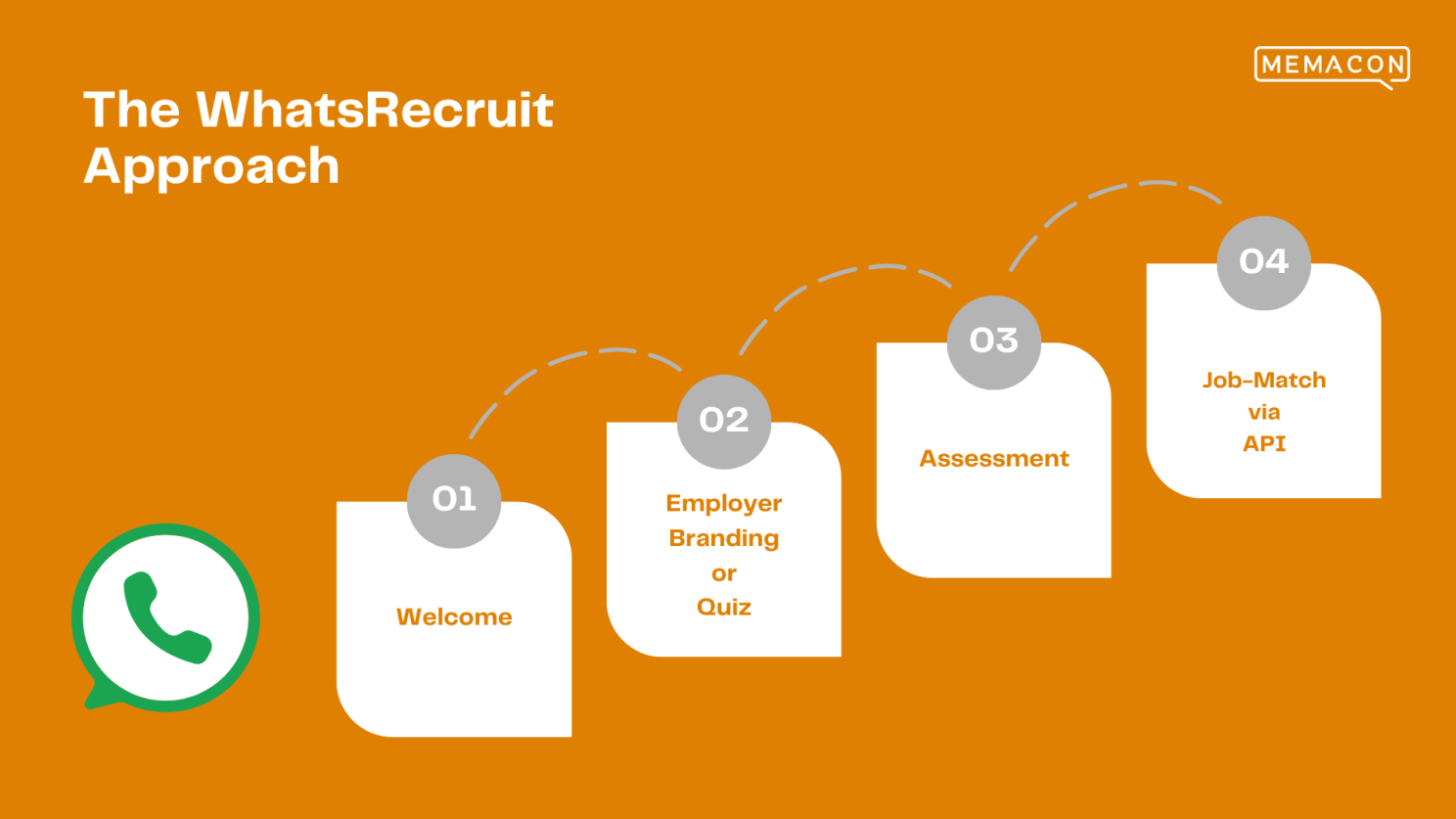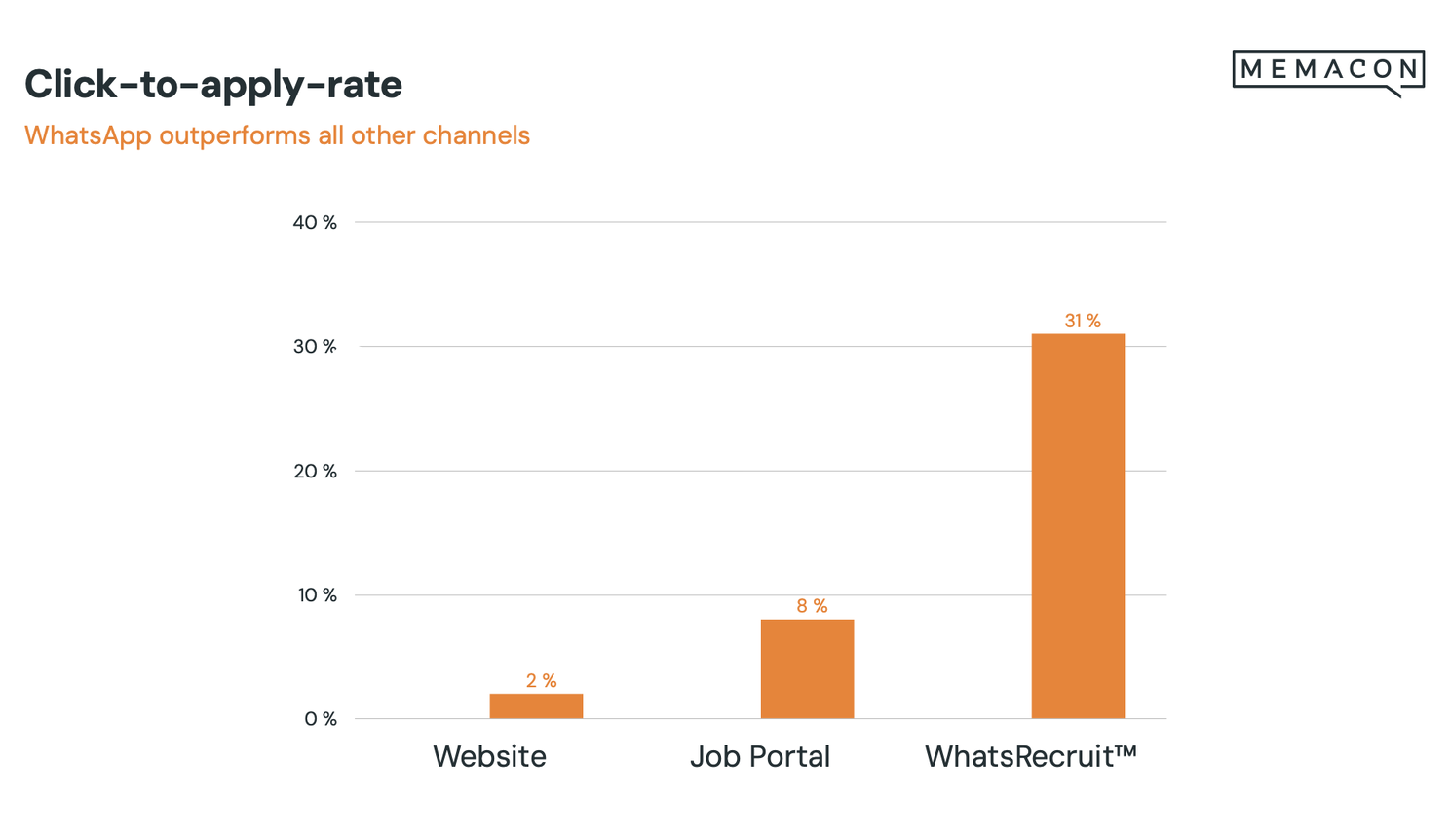
How IKEA drastically removed hiring friction with WhatsApp
Key points of the project
- Industry: Retail
- Use Case Type: Real-world implementation
- Channel: WhatsApp
- Primary Goal: Reduce communication barriers in the application process to an absolute minimum, WhatsApp provided the ideal solution
The Challenge
While IKEA Switzerland’s existing systems already delivered solid results, the company wanted to take the next step and reduce entry barriers in the recruitment process even further.
Especially for mobile-first users and digitally less experienced candidates outside the younger target groups, applying online often feels unclear or cumbersome. In contrast, WhatsApp offers a familiar and streamlined experience, replicating the simplicity of private chats and removing unnecessary friction.
The Approach
The application process was intentionally designed to feel effortless, yet smart.
After joining via QR code or link, users are greeted by a chatbot that provides a playful onboarding, explains the process and offers three clear paths:
- Explore IKEA’s culture and values through employer branding videos
- Take a quiz to dive deeper into the brand’s story
- Create a personalized job alert – the core feature
If users choose the job alert path, they complete an interactive, button-driven assessment with gamified elements. They can upload their resume or even create one directly within the chat, making the process highly accessible.
Once complete, the chatbot automatically monitors the IKEA job API. As soon as a matching position becomes available, the candidate receives a simple WhatsApp message: “Your dream job just opened – would you like to apply?”
If the user confirms, all data is seamlessly transferred into IKEA’s applicant tracking system, and the standard HR processes take over from there.
The Result
Since launch, over 15,000 users have interacted with the IKEA Switzerland recruiting chatbot. With a click-to-apply rate of more than 30 percent, the project clearly exceeded expectations.
“The JobBot aligns with our values of accessibility and simplicity,” says Parag Parekh, CDO at IKEA Retail (Ingka Group). “Through solutions like these, we are reimagining our digital tools to create connections that matter. Our omnichannel approach is about meeting people where they are, ensuring their IKEA experience is seamless and valuable across every touchpoint.”
The seamless integration, playful flow and familiar messaging environment resulted in a highly accessible application journey – especially for users who might otherwise drop out in traditional online processes.
What You Can Learn From This
This use case highlights three key takeaways:
- A click-to-apply rate above 30 percent significantly outperforms traditional job portals and career websites
- WhatsApp-based applications can be fully integrated into existing applicant tracking systems – no change or training required for HR teams
- Memacon’s WhatsRecruit™ enables the lowest possible barrier to entry for candidates – entirely automated, fast and accessible
While particularly effective for companies hiring large volumes of blue-collar workers, the approach has also proven valuable across white-collar roles and other recruitment contexts.





